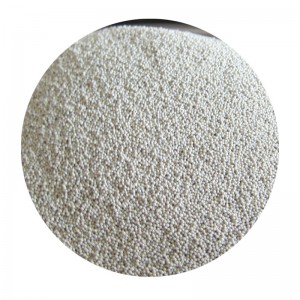Sand Casting of Cast Iron An Overview
Sand casting is one of the oldest and most widely used methods of metal casting, particularly for cast iron components. This process involves creating a mold from sand, which is then used to form parts by pouring molten metal into it. Cast iron, known for its excellent fluidity, castability, and durability, is the ideal material for sand casting, making it a popular choice in various industries.
One of the significant advantages of sand casting is its flexibility. It can produce complex shapes that are difficult to achieve with other manufacturing methods. This adaptability is especially beneficial when working with cast iron, as the material can easily replicate intricate designs. The sand used in the casting process can be easily shaped, allowing for detailed patterns and cores to be incorporated into the mold. Additionally, sand molds can be reused multiple times, adding to the efficiency of the process.
The sand casting process begins with the creation of a pattern, which is a replica of the final product. This pattern is typically made from materials such as wood, metal, or plastic and is used to form the mold. Once the pattern is ready, it is placed into a mold box filled with sand that is mixed with a binding agent, usually clay. The sand is compacted around the pattern to create a mold cavity.
After the mold is formed, the pattern is removed, leaving a hollow shape that mirrors the desired object. At this stage, if the design requires internal features, cores made from a similar sand mixture can be added. Once the mold is fully prepared, molten cast iron is poured into the cavity. The molten iron, heated to temperatures around 1200 to 1400 degrees Celsius, flows easily into the mold, filling every detail.
sand casting cast iron

As the molten iron cools and solidifies, it takes on the shape of the mold. Once cooled, the mold is broken away, revealing the cast iron object. The resulting product usually requires some finishing processes, such as grinding or machining, to remove any surface imperfections and achieve the desired final dimensions.
Cast iron itself is a group of iron-carbon alloys with a carbon content greater than 2%. Its composition gives it excellent wear resistance and high fluidity, making it particularly suitable for sand casting. There are various types of cast iron, including gray iron, ductile iron, and white iron, each with unique properties and applications. Gray iron is the most commonly cast iron, known for its good machinability and excellent damping characteristics, making it ideal for automotive parts, machinery bases, and pipes. Ductile iron, on the other hand, has higher strength and ductility, making it preferable for infrastructure projects such as bridges and pipes.
Environmental considerations are increasingly important in modern manufacturing processes, including sand casting. Traditional sand casting methods can generate waste and environmental impact due to the use of sand and binding agents. However, advancements in technology are leading to more sustainable practices, such as the use of recyclable materials and the development of eco-friendly binders.
In conclusion, sand casting of cast iron remains a vital technique in the manufacturing industry, combining tradition and innovation. Its ability to produce complex shapes cost-effectively and efficiently ensures its continued relevance. With an increasing focus on sustainability and technological advancements, the future of sand casting is likely to be both innovative and environmentally conscious, making it an exciting field to watch as it evolves. Whether in automotive manufacturing, construction, or machinery production, the sand casting of cast iron will remain a critical component of industrial practices for years to come.
Post time:Dec . 26, 2024 01:00
Next:Innovative Techniques in Additive Manufacturing with 3D Sand Printing Technology
